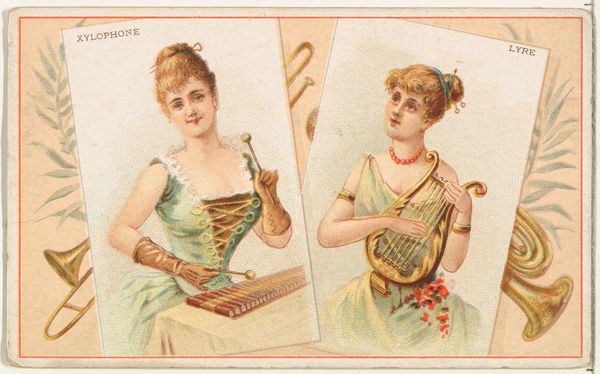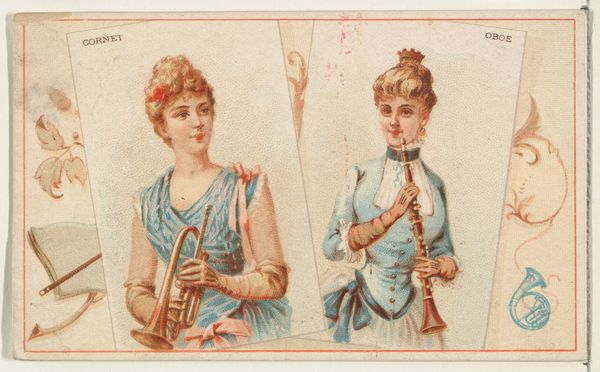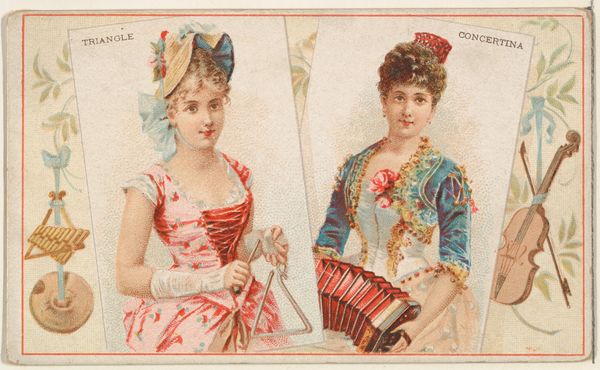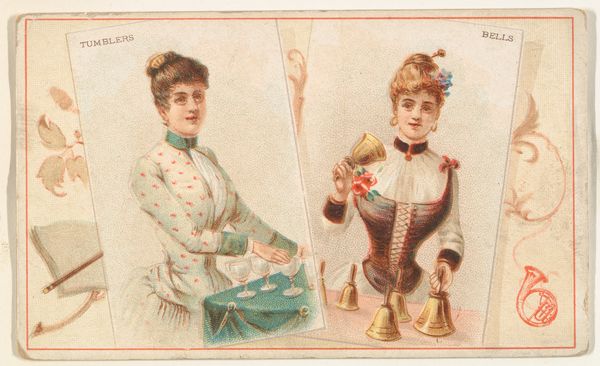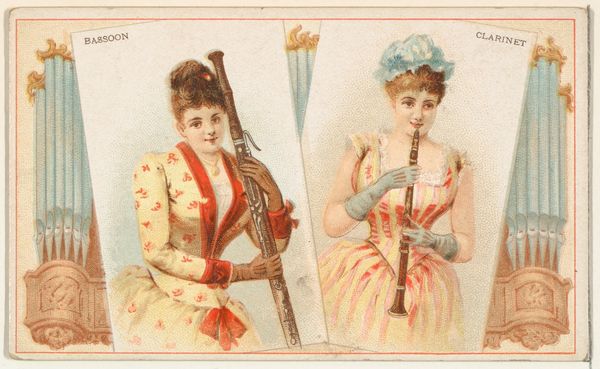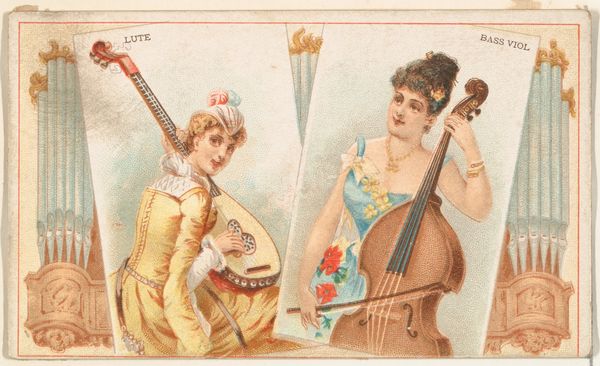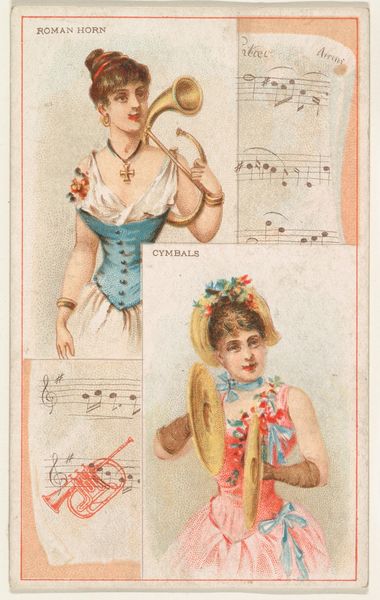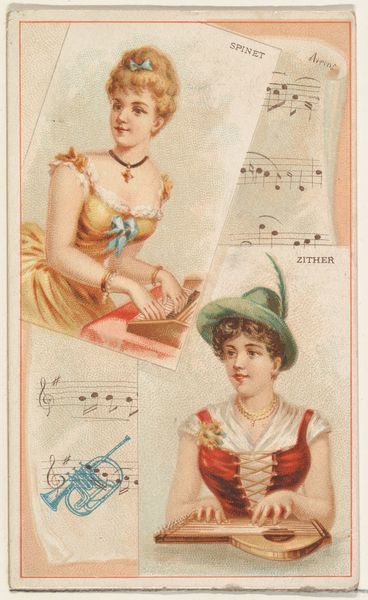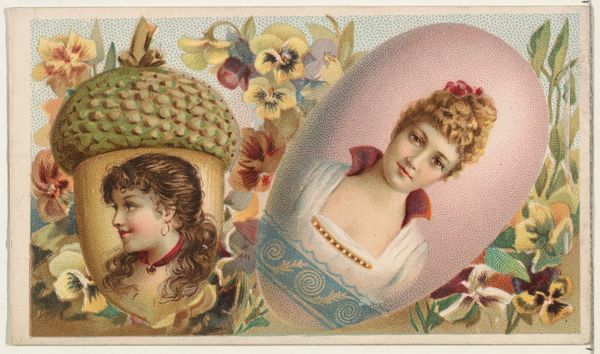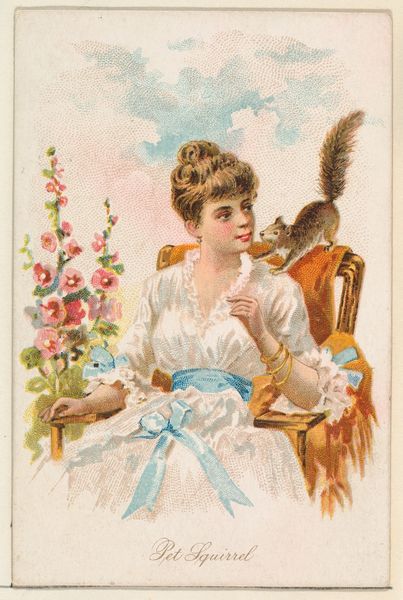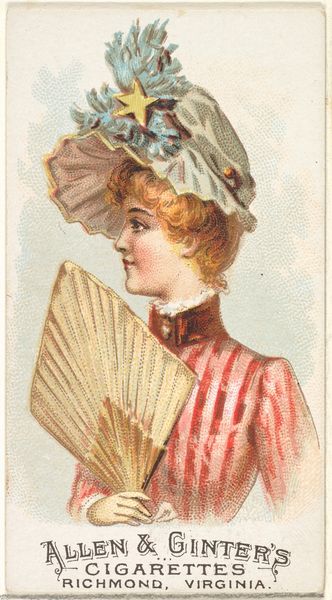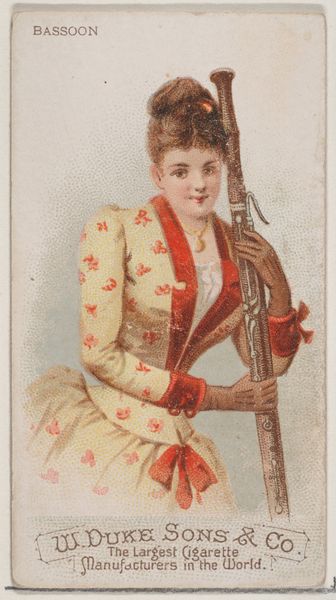
Saxophone and Flute, from the Musical Instruments series (N121) issued by Duke Sons & Co. to promote Honest Long Cut Tobacco 1888
0:00
0:00
drawing, coloured-pencil, print, watercolor
#
drawing
#
coloured-pencil
#
water colours
# print
#
impressionism
#
watercolor
#
coloured pencil
#
genre-painting
#
watercolor
Dimensions: Sheet: 2 1/2 × 4 1/16 in. (6.4 × 10.3 cm)
Copyright: Public Domain
Curator: This delightful card is one of a series created in 1888 by W. Duke, Sons & Co. to promote their Honest Long Cut Tobacco. It's called "Saxophone and Flute," and the images are rendered in color pencil and watercolor. Editor: It’s certainly eye-catching. It strikes me as a sort of Gilded Age fever dream—two women adorned like porcelain dolls, each poised with an instrument. It almost feels like a commentary on the role of women in entertainment and commerce at the time. Curator: Exactly. Tobacco cards like this were essentially miniature artworks, designed to be collected and traded. They reveal a lot about the cultural landscape and material production of the era. Think of the paper quality, the printing process, and the economics that made it all possible. Editor: Absolutely. These cards weren’t just passively consumed; they actively shaped identities and reinforced societal norms. Note how these figures aren't just musicians, but are presented in ways that align them with bourgeois concepts of femininity and domesticity, subtly reinforcing the relationship between beauty, leisure, and social class. Curator: What's fascinating is how they collapse the highbrow world of musical performance into a consumerist enterprise. The attention to detail, down to the shading in their dresses, suggests skilled laborers executing a design brief meant to catch the consumer's eye in the marketplace. The card becomes an object, embedded with labor value. Editor: Precisely! We also shouldn’t overlook the subtle marketing at play here. Associating musical refinement with tobacco consumption served to sanitize and legitimize the product, perhaps subtly targeting women smokers at the time or appealing to broader family decisions of what to purchase. Curator: It highlights the commercial ingenuity, blurring the boundaries between art, labor, and product. Even the choice of colored pencil and watercolor is noteworthy, allowing for mass production that retained a semblance of artistry and refinement. Editor: In the end, what was ostensibly a promotional tool ended up being a pretty rich document. I love the potential that historical objects hold for thinking about larger societal contexts, gender dynamics, labor rights, and more. Curator: Indeed, each of these mass-produced artworks can tell a detailed, tactile story about industry. Editor: And challenge our preconceptions about art and its purpose.
Comments
No comments
Be the first to comment and join the conversation on the ultimate creative platform.
